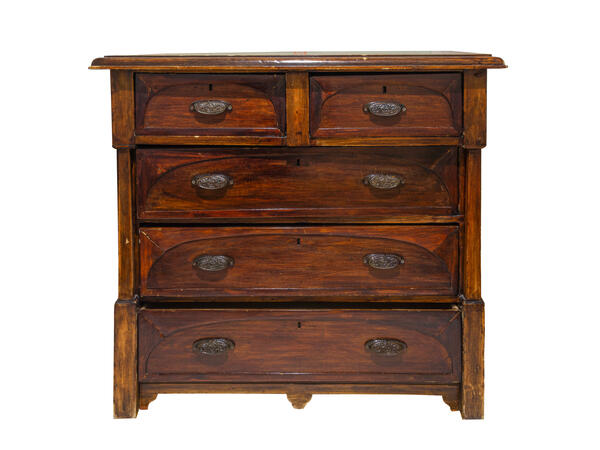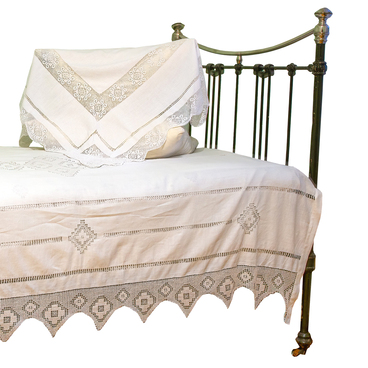The museum’s collection contains a chest of drawers, which Majit Gafuri used in his lifetime. However, it is unknown where this piece of furniture was made and how it got into the poet’s house.
There are several countries fighting for the right to be called the homeland of chest of drawers: there is a theory that they first began to be made in France, but masters were also in Italy and in England. Nevertheless, a chest of drawers was also known as ‘commode’, this word is French and translates as ‘convenient’. Researchers believe that this piece of furniture evolved from a usual chest, which was in almost every home. The chest of drawers appeared when people wanted to increase the capacity and functionality of the chest. Compared to its ancestor, the chest of drawers was more practical and allowed to sort things according to their designation. Chests of drawers were usually made of cheap wood (pine or oak), and for the finishing a more expensive wood (walnut or mahogany) was usually chosen.
Chests of drawers came into general use in the beginning of the 18th century, when drawers began to be added in usual chests for storing clothes. At the same time, they were equipped with high legs and a variety of decorative elements. As time went by, the chests were used to store jewelry and other household necessities.
The chest of drawers went through the greatest metamorphosis during the heyday of the Rococo style. At that time, a huge number of forms and options for finishing this piece of furniture appeared: they were created with a mirror for the boudoir and in the form of a secretaire for the study. Shapes ranged from curved pieces with thin legs to massive and angular heavy cabinets. In those days, luxurious chests of drawers were made by master cabinet makers. The most expensive pieces were made of marble, ivory or tortoise.
There was also furniture in Russia, which can be considered the prototype of the modern chest of drawers. It was called ‘shaf’ or ‘skrynya’. It was one of the types of chests for storing one’s belongings. In the 19th century, chests of drawers were no longer furniture for the rich. They were no longer decorated with expensive materials, and they began to perform utilitarian functions.
There are several countries fighting for the right to be called the homeland of chest of drawers: there is a theory that they first began to be made in France, but masters were also in Italy and in England. Nevertheless, a chest of drawers was also known as ‘commode’, this word is French and translates as ‘convenient’. Researchers believe that this piece of furniture evolved from a usual chest, which was in almost every home. The chest of drawers appeared when people wanted to increase the capacity and functionality of the chest. Compared to its ancestor, the chest of drawers was more practical and allowed to sort things according to their designation. Chests of drawers were usually made of cheap wood (pine or oak), and for the finishing a more expensive wood (walnut or mahogany) was usually chosen.
Chests of drawers came into general use in the beginning of the 18th century, when drawers began to be added in usual chests for storing clothes. At the same time, they were equipped with high legs and a variety of decorative elements. As time went by, the chests were used to store jewelry and other household necessities.
The chest of drawers went through the greatest metamorphosis during the heyday of the Rococo style. At that time, a huge number of forms and options for finishing this piece of furniture appeared: they were created with a mirror for the boudoir and in the form of a secretaire for the study. Shapes ranged from curved pieces with thin legs to massive and angular heavy cabinets. In those days, luxurious chests of drawers were made by master cabinet makers. The most expensive pieces were made of marble, ivory or tortoise.
There was also furniture in Russia, which can be considered the prototype of the modern chest of drawers. It was called ‘shaf’ or ‘skrynya’. It was one of the types of chests for storing one’s belongings. In the 19th century, chests of drawers were no longer furniture for the rich. They were no longer decorated with expensive materials, and they began to perform utilitarian functions.



